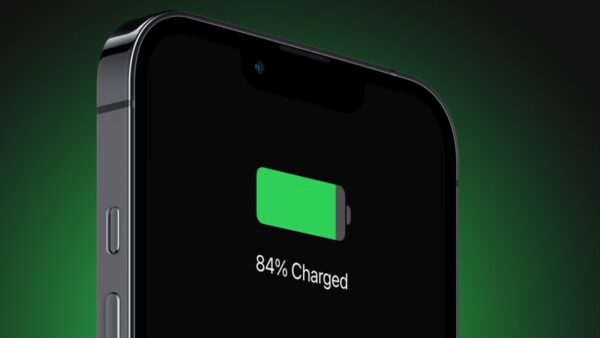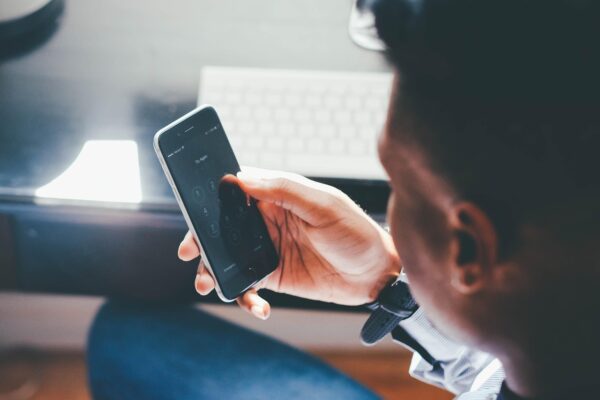Android is one of the most commonly used mobile operating systems, and it has been a big part of tech and our lives. Although Android devices offer so much, from entertainment to communication and productivity, we can't help but notice their downsides and common issues. Even the best technologies have their hiccups, and Android is no exception. Whether it's battery drain, a sluggish interface, or app crashes, Android users often face technical issues that are far from fun; they're usually frustrating. Let's explore the common Android problems and their probable solutions.
1. Battery Drain

We all know how important the battery is to the phone. The battery is one of the Android components, and it's the power source that keeps your phone running all day. So what happens when your phone suffers from constant battery drain? You might have to deal with constantly looking for where to plug in your phone. You might even have to carry a power bank with you all day, which could be a bit of an inconvenience.
What if you don't have to deal with battery drains? What if there's a solution to your Android's battery drain and a way to attain good battery efficiency? Optimizing your phone battery is a good way to keep battery drain at bay on your Android. Here's a simple step to go about it:
- Open your device settings and click on the battery option.
- Note the power-draining app and turn off background activity
- Consider battery-saving modes when necessary.
Another thing you can do is to mind your connectivity and ensure there's no background data usage. Always turn off connectivity options such as Bluetooth, hotspot, and Wi-Fi to avoid battery drain.
2. Unresponsive Screen

One thing an unresponsive screen does to an Android user is frustrate them, and this is usually a result of a software glitch. Many things, such as software bugs, hardware problems, full storage, or network issues, could cause software glitches. Whatever the situation is, it is no less frustrating.
To troubleshoot an unresponsive screen problem, you can start by using your phone restart option, especially for temporary software glitches. You should also check for phone updates; your unresponsive screen should be the result of using previous operating systems or even apps.
Other things you can do include:
- Clean debris and dust gently from your smartphone using a soft, dry cloth.
- Check for storage issues and free up space by removing apps that are not constantly in use.
- Check if the phone case and accessories, like a screen protector, interfere with the phone's touchscreen.
- Try a factory reset if the above solutions do not work out.
- Contact professionals if the problem persists after trying the solutions suggested above.
3. Overheating
Another persistent phone issue among Android owners is overheating, especially among users who use energy-consuming apps and perform intensive tasks like gaming and video streaming. While overheating might be normal in some cases, it most often indicates an issue with the battery, software, or even hardware.
If you encounter an issue like this, you should do the following:
- Reduce the rate of phone usage
- Avoid playing graphic-heavy games for too long
- Get a phone cooling pad
- Close unused apps
- Remove the case when charging
4. Charging Problem
One of the common Android problems that can cause its user to panic is the inability to charge their phone. It's common knowledge that it's only when your phone is well-charged that you can enjoy its usage. A slow or no charging can result from a faulty charging cable, a faulty charging port, or battery issues. What should you do if your Android is not charging? If the problems stem from a defective cable, you might need to change your charger; if it's the charging port, get professionals to fix it. If it's a battery problem, you need a professional to fix it, whether it's an irremovable or removable battery.
5. Connectivity Issues
Connectivity is an integral part of phone usage; it helps you stay connected to mobile networks. Issues encompass Wi-Fi, Bluetooth, or mobile data and can stem from incorrect settings or software problems.
In the case of connectivity issues, here's what you can do:
- Toggle the “Airplane” mode on and off.
- Check and do a quick restart on your network.
- Restart your device
- Seek professional help in case of hardware-related problems.
6. App Crash
Due to outdated app versions, corrupted cache, low memory, and software bugs, Android users can often experience app crashes. If you're bothered by why your phone keeps crashing, you should look out for any of these reasons. You can follow these troubleshooting methods to sort app crash issues:
- Restart your phone for temporary glitches.
- Update the app to ensure you have the latest version.
- Reinstall the App
- Free up storage space as apps require space to run.
- Check the cache option to clear the app cache and Data.
- Do a factory reset.
7. Phone Freezing
Don't panic when your phone freezes; there are ways to go about it. A phone that freezes regularly implies it runs too many apps simultaneously. It could also be a result of your phone having a system glitch. To solve this common Android problem, you must close all background apps and free up memory. You can also consider booting in safe mode to know if a third-party app is causing the issue.
8. Camera Malfunctions
Irrespective of the software your smartphone runs on, the camera is an essential feature of a phone, and Android phones with the best cameras are a steal. However, in the case of owning an Android, camera malfunctions seem to be one of the common Android problems, and it could be disheartening, especially when you're in the mood to take pictures and make memories, and your camera is acting up.
This major issue ranges from the camera not opening to blurry images and the camera app crashing. It's good news that you can fix your smartphone camera to keep the fun going. First, you should close the camera app and the apps that use your camera, then restart your phone. Cleaning the cache in the camera app settings is another solution you can try out, and if it doesn't work out, you should try updating your device itself. However, if your mobile phone's camera malfunction happens to be a hardware issue like lens damage, you should seek professional help for replacement or other probable solutions.
9. Storage Full Errors
What do you do when you see the storage full notification? It's not a pretty sight, especially when you want to download an app or documents you need so badly. Storage full errors are one of the common Android problems that Android users can't deny having. So what if you've deleted files and cleared cache data? Hidden folders can make you keep getting the full storage notification. Not to worry, there are other ways to go about it, and here are some of them:
- Use a file manager to locate larger files on your phone and delete the unnecessary ones.
- Fish out and delete unused apps.
- Transfer photos and videos to cloud storage or an SD card.
10. System Update Errors
Have you ever gotten the notification “Unfortunately, the system UI has stopped” or “System UI is not responding on your Android device?” That's what happens when your Android has a system update error. Various things, including a poor cellular network, insufficient phone storage, or corrupted files, can cause this error. If you try to make an update and it keeps failing, you need to do something about it as soon as you can to resume using your phone.
There are many things you can do about that, and they include:
- Clear the cache partition through the recovery mode
- Check your mobile network connection and ensure it is available.
- Free up storage space to accommodate the update you're about to make.
11. Blurry Camera
What happens when you take a picture on your Android phone, and it goes all blurry? If you're curious about how to fix your Android's camera quality, the solution is simple. All you need to do is clean the camera lens of your mobile phone with a microfiber cloth and use your camera under better lighting conditions. You can also update your smartphone if the camera's autofocus is not working.
12. Battery Swell
Battery issues are no fun, and a swollen battery is distressing and can cause safety hazards. Oftentimes, a battery swell is due to battery overcharge, which leads to poor battery life. Of course, you want to have your phone up and running all day but don't overcharge your phone at the expense of its battery life. Another thing that can cause a battery to swell is using an incompatible charger to charge your phone. These chargers seem practical momentarily, but they will affect your battery in the long run. Battery aging is another thing that can cause your phone battery to swell.
If you notice your phone bulging, stop using it and take it to a professional to replace the battery. However, if your battery is not swollen and you want to maintain a good battery life, here are preventive measures to keep it that way and prevent :
- Use the correct or compatible charger for your phone.
- Do not overcharge your phone; don't leave it plugged in when full.
- Don't expose your phone to the sun, heat, or extreme temperatures.
13. Syncing Issues
Getting a notification about a syncing issue is the last thing you want on any day. Whether it's Google, email, or other accounts, synchronization is vital as it helps you save things on multiple locations or devices. Syncing issues can be a result of incorrect settings or connectivity issues. In this case, you can turn your auto-sync feature on so that whenever you're connected to the internet, it can do its job. Another thing you can do is to remove and re-add the account you're trying to sync.
14. Malware problem
If there's anything malware does, it's slow down your device. Being trapped with a slow device is frustrating in this age and time, where the human attention span is super low. Since having malware on your smartphone is one of the common Android problems, users need to be aware of it. Another thing it does is to show unwanted ads and even steal your data.
Here's what you should do to remove and avoid malware problems:
- Clear all browser cache in your settings app
- Do a factory reset
- Remove suspicious apps from your phone
- Use a reputable antivirus app to scan your device
- When searching on the internet, ensure you do so in safe mode
- Don't sideload APKS from unknown sources
15. Inability to Download Apps
Most of the time, not being able to download apps is associated with storage issues. Although it might be a prominent factor, what happens if you have enough storage and you're still unable to make any downloads? This could be an issue with the Google Play Store or the app's performance itself. You can get rid of this Android issue by simply clearing the Play Store cache and also ensuring you have a good internet connection when you're downloading any app.
Conclusion
No smartphone is perfect, and Androids are no exception. These common Android problems can give you a bad day, from unresponsive screens to syncing issues. On the good side, most of these problems have simple and quick fixes. All you might need could be a simple restart. You just have to know the cause of the problem, apply the solution, and visit a professional when you have to. Your Android deserves the best treatment, and so do you.















